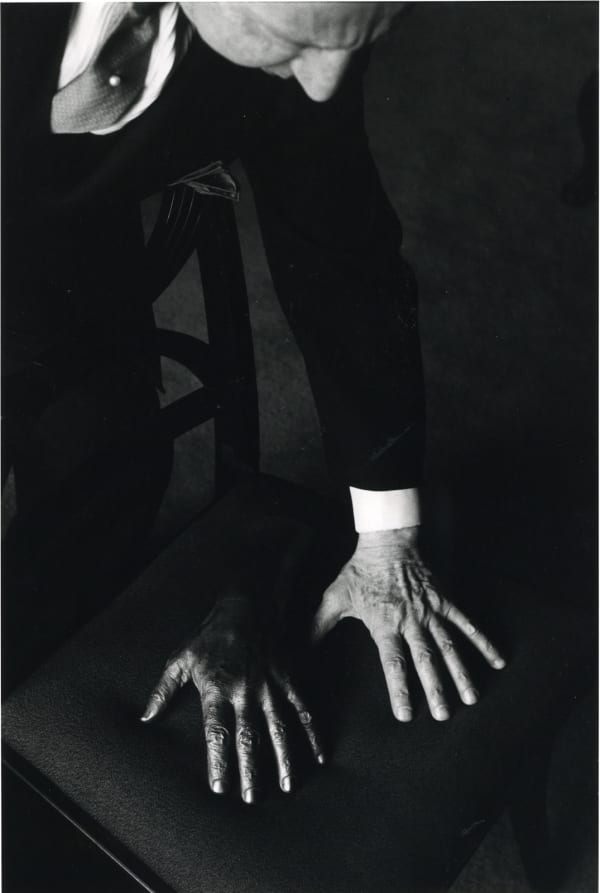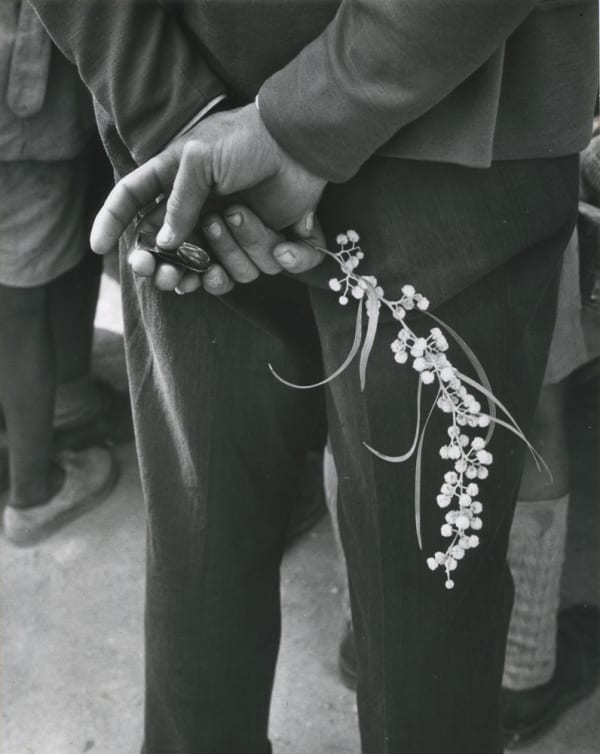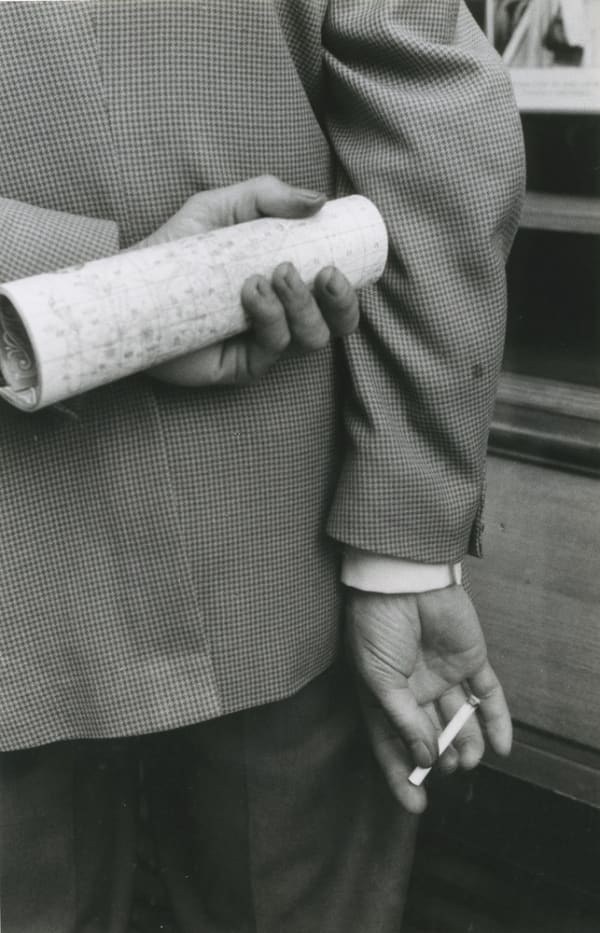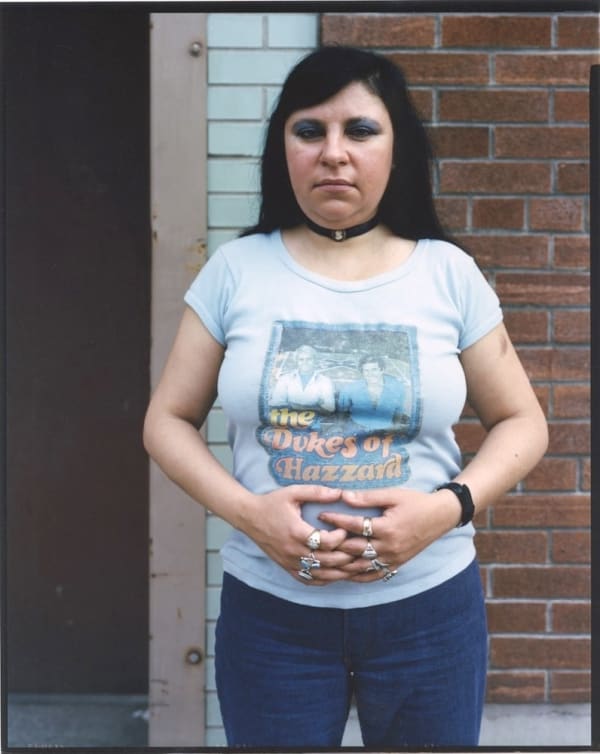The hand, a dreaded style exercise in painting and drawing, became a recurring technical and symbolic motif from photography’s earliest stages onward. Since a shot makes it possible to represent the hand as a fragment, isolated from the rest of the body, the hand henceforth became a subject in its own right.
It is the ultimate personification of an appendage, signing and affixing its digital imprint. On its own, it metonymically shapes its owner’s portrait. In fact, Berenice Abbott chose to represent Jean Cocteau, who was so fascinated by hands that he made them speak in his film The Blood of a Poet (1930), through his two hands harmoniously resting on a hat.
-
« What doe we with our hands? Doe we not sue and entreat, promise and performe, call men unto us and discharge them, bid them farewell and be gone, threaten, pray, beseech, deny, refuse, demand, admire, number, confesse, repent, feare, bee ashamed, doubt, instruct, command, incite, encourage, sweare, witnesse, accuse, condemne, absolve, injurie, despise, defie, despight, flatter, applaud, blesse, humble, mocke, reconcile, recommend, exalt, shew gladnesse, rejoyce, complaine, waile, sorrow, discomfort, dispaire, cry out, forbid, declare silence and astonishment: and what not? with so great variation and amplifying as if they would contend with the tongue.»
MONTAIGNE, LES ESSAIS, LIVRE II, CHAPITRE XII, 1580
-
In Ernst Haas’ portrait of the pianist Arthur Rubinstein, the hand also stands for the subject’s profession and talent, and we search it for signs of his virtuosity. Accompanied by its sculpted double, this emblematic hand underlines his creative force.
-
'Florette', Excerpt from the book 'Jacques Henri Lartigue, Une vie sans ombre' read by Martine d'Astier. (In French)
Martine d'Astier worked alongside Jacques Henri Lartigue from 1981 until his death in 1986. She directed the Jacques Henri Lartigue donation from 1986 to 2017.
-
Sabine Weiss
-
Bruce Wrighton
-
Tom Arndt
Street Musician, 1997I made this portrait in fall of 1997 in Chicago. I had just purchased a 75mm Summilux f1:4 lens for my Leica M6. It is a legendary portrait lens.I saw this man below the Michigan Ave Bridge, which crosses the Chicago river,, playing the harmonica by himself. There were no people near him. He was pretty isolated. I went down a flight of stairs and asked if I could make a photograph of him. He nodded and I made several frames. It was low light and I had to be careful about focus as the depth of field is less than a wide angle lens. My shutter speed was maybe a 60th of a second, so I had to hold the camera very still. I was satisfied with the moment. I developed the Tri-x film in Xtol developer. I believe I printed it on Bergger VCNB. That paper is hard to get now.The technical aspects are important because our vision is dependent on our ability to render the idea of the photograph with the clarity and feeling.How the film is developed, paper choice, toning, are all essential elements of making timeless evocative photographs.This portrait has become one my most memorable. I don't use this lens often, but it still very important to me.Tom Arndt, March 2021
-
WEEKLY SELECTIONS
Until our exhibitions reopen, sign up to receive our weekly selections!
For any information, the team can be reached by email: contact@lesdoucheslagalerie.com












